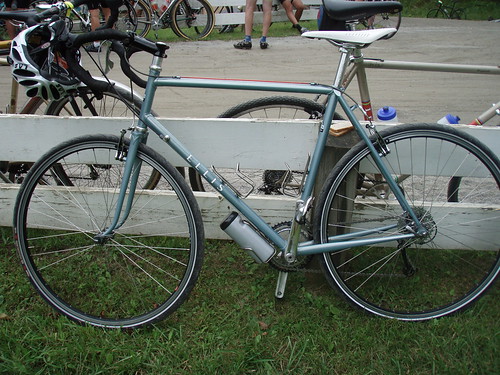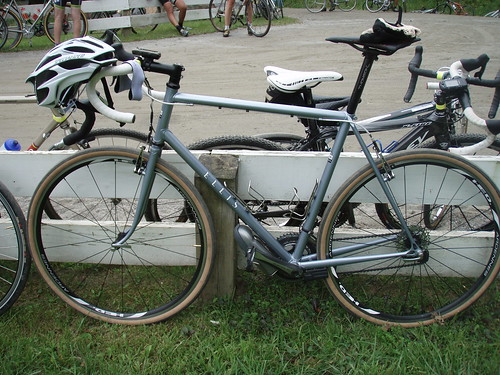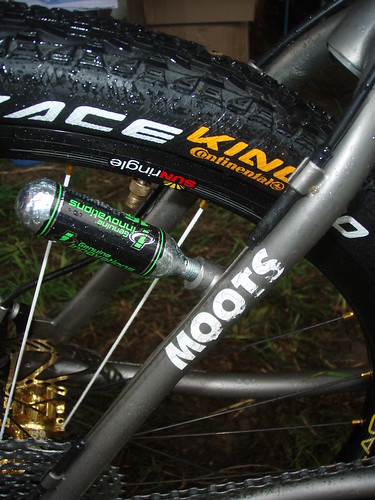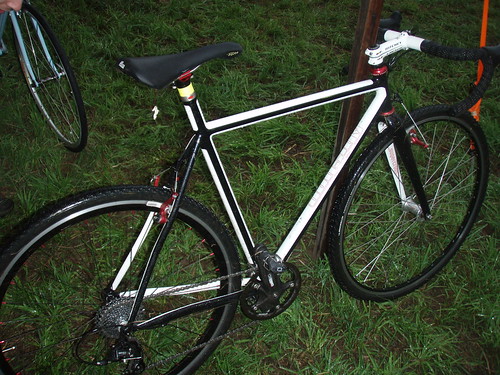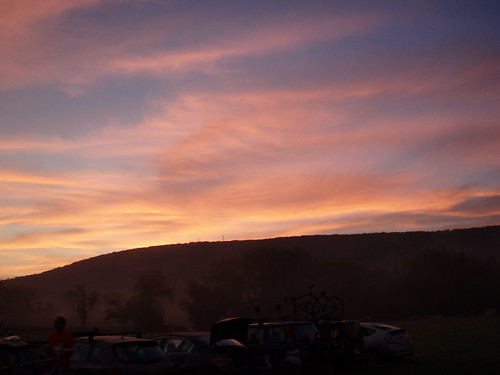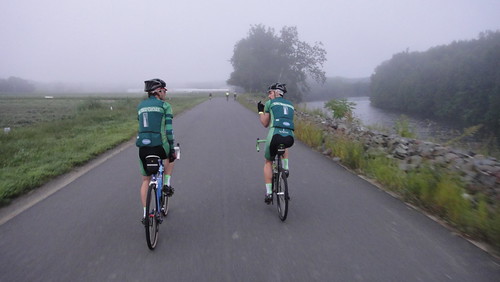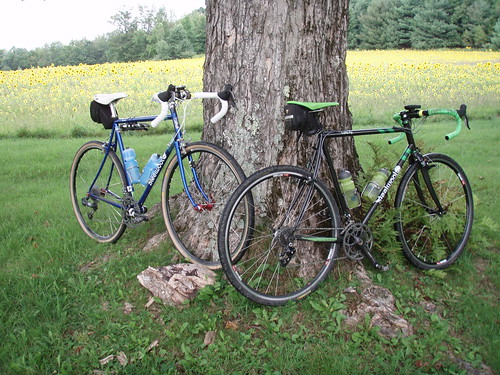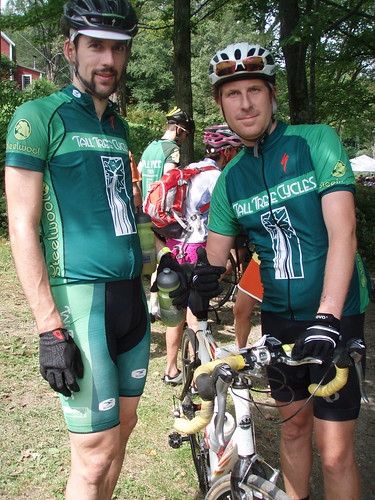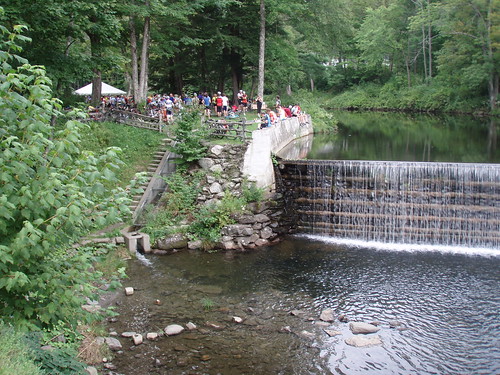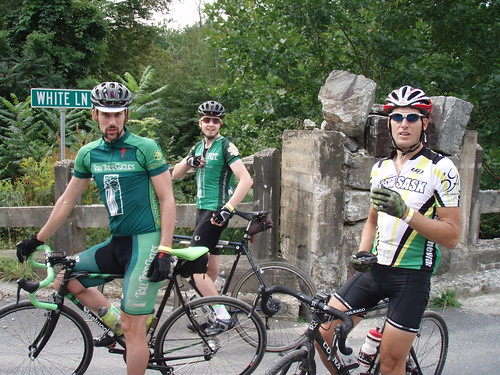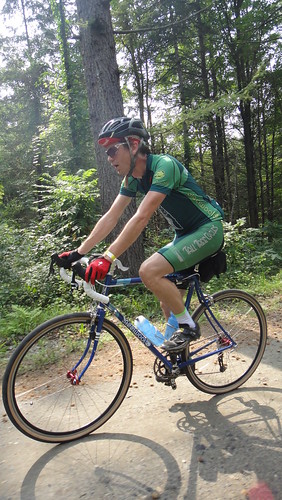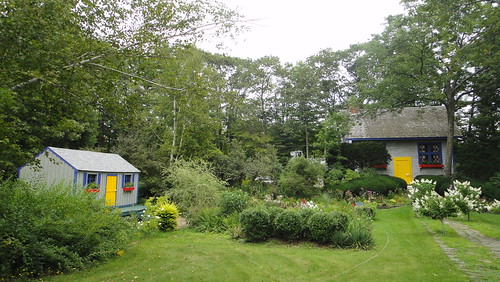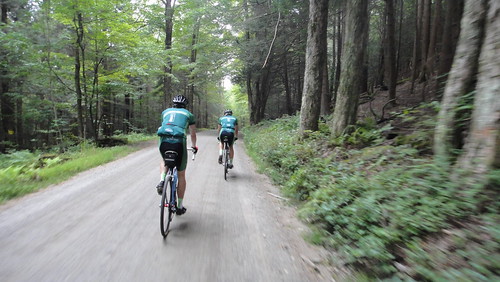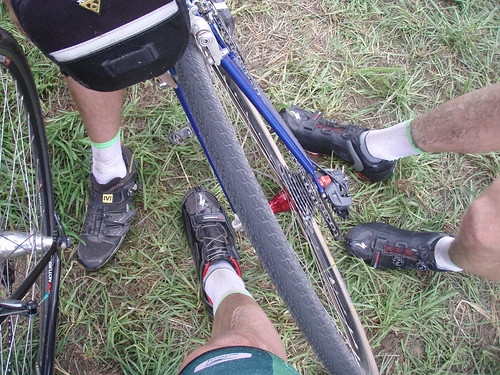
Steelwool Rover Prototype (1 of 2)
All dolled up for D2R2
D2R2 is a special ride. So special in fact that a non-racer-type like myself obsesses over the preparation in a similar fashion, I’m sure, to how some PROs do over Paris-Roubaix. Get the body tuned, get the gear sorted out; these two together seem to help prepare one's state of mind.
Last year I rode D2R2 on my
Pinarello Cross bike, equipped with a hodge-podge 9 speed 11-34 cassette, compact-double crankset and Grand Bois Cypres 700X30 tires (they call them 32s now).
I made all of the climbs and did not get any flats.
I’ve said it before and I’ll say it again, it was the
Best Ride Evar.
Does that mean that I should just do everything the same this year?
Well, no.
This year I shall be riding my lurvely prototype Steelwool Rover. While Matt’s Truffle Pig is a full on cycloross racing machine that can pass as an all road bike, this bike is the opposite despite looking rather similar and sharing a very similar tubeset. With an even lower BB and lower trail steel fork, the Rover is more polite - a gentleman if you will. Not always in a hurry, willing to take care of a tired rider on a long slog on the road or in the gravel, but perfectly capable of throwing it down at the Wednesday Night World’s. Sort of James Bondish: He wears a tux, but is packing heat most of the time. I have never felt beat up on this bike, nor have I wished for more snap when sprinting for the sign at the end of our loop. It always seems to do what you want it to do. Like a dog (possibly named Rover, but who knows) eager to please his master. I’ve even taken it on the double track in the Gatineau park, with big tires of course - thanks to all that clearance. And I know our good buddy Steve, aka The Colonel, has taken his identical bike touring with racks and panniers front and back (or maybe it was just front racks and a trailer?). Whatever, this thing is versatile.
For this weekend’s big event, I have replaced the full Sram Force 11-28 setup with a 10 speed X7 derailleur and 11-34 cassette. The shifting is pretty much as precise as with the Force RD, but now I have a 1-1 gear ratio, just what I need for those double digit grades. I’m running Stan’s Alpha rims but was not in the mindset to sort out a tubeless setup like Matt’s. Instead, I went with good ol’, enormous 700X35 Panaracer Paselas.
Now THAT's a cluster. 10 Glorious gears of climbing bliss
 Paselas on the Rover: It's getting a little tight around the chain stay area, but hey, we're talking 35s here.
Paselas on the Rover: It's getting a little tight around the chain stay area, but hey, we're talking 35s here.
Matt and I switched front wheels last Sunday for about and hour and while his custom shaved Stan's Raven felt mighty quick and supple, the Paselas felt great, not slow or ponderous. People! Can we stop being scared of big tires and get on with it? They offer so much potential to your boring weekly group ride down the same old paved roads to the same old antique dealer and bakery. I find it ironic that our society has embraced the over-equipped SUV to go to work or the grocery store but insist on running 23mm tires pumped to 120 PSI on our velocipedes.
But I digress.
So I gots me the gears and the tires. That should help me climb and descend with some confidence. This brings me to a Rover highlight: the brakes. My prototype is equipped with Paul’s Racer M centerpulls. Not only do they offer ridiculous stopping power and modulation, they do it while leaving a whole bunch of room for big tires or for fenders… which I removed in June this year, I think. Gahd.
The stop-tacular Paul's Racer Ms leaving a generous amount of clearance for the Paselas. Hmm, cordless phones and touring tires - the strong points of Panasonic...
Certain members of the Tall Tree crew have been talking about this weekend for months. We’ve ridden hundreds of KMs, climbed thousands of, um, Ms, spent hours carefully considering how we should setup our velos. Heck, I even made a batch of homemade granola to start the day with. Andy will be the newbie but the rest are returning this year with a D2R2 already under our belts. (this is Matt’s 3rd) We’re dealing with known knowns this time. But it’s a big day and a lot can happen. Will it top last year’s “Best Ride Evar”? We shall soon see.
Stay tuned.

